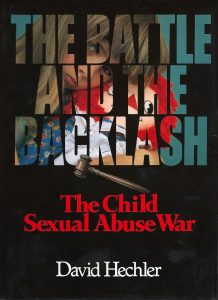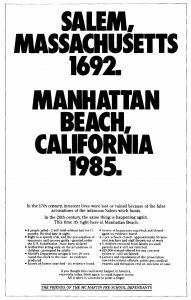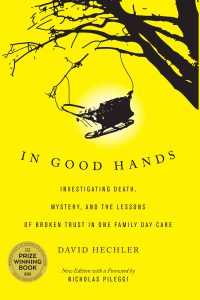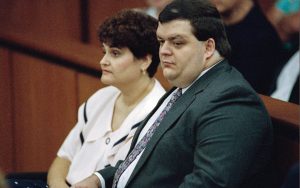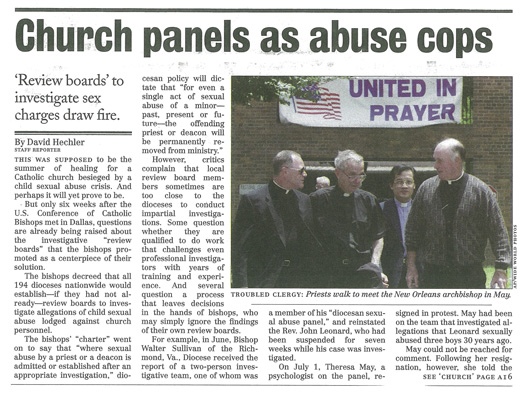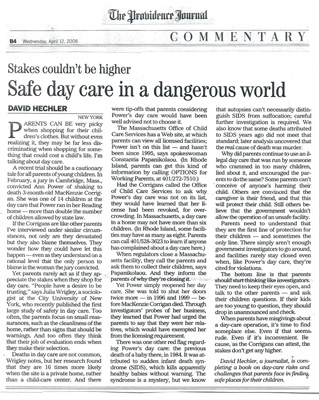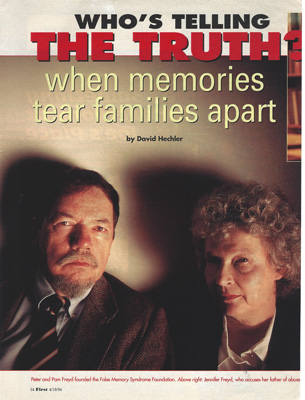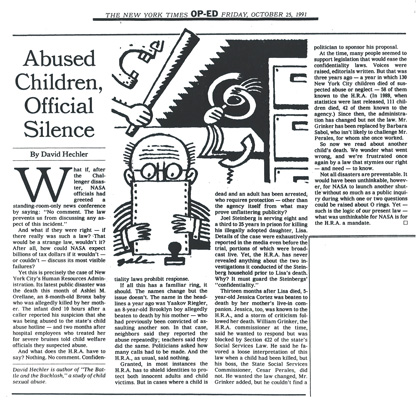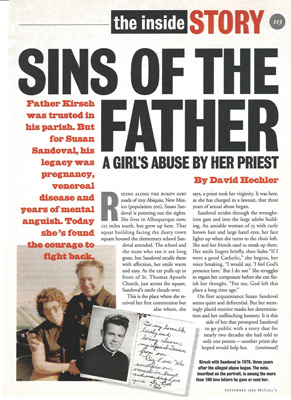Child Abuse
I began writing about child abuse when I was a student working on a master’s in journalism at Columbia University. It wasn’t something I’d planned in advance, but the interests I brought with me to Columbia, along with a chance meeting while I was pursuing a related story, led me to the subject that would have a lasting impact on my life.
I’d been a high school English teacher for seven years before I changed careers, and I’ve always cared deeply about children’s issues. After I stopped teaching, my earliest project as an aspiring journalist had been an investigation into a murder. I’d called off that effort long before I got to Columbia, but it had piqued my interest in the criminal justice system.
The victim in the murder case was a young man who had been in trouble with the law most of his life. At Columbia, I thought I would write my master’s thesis on juvenile justice. A deeply reported examination of that subject might in some sense replace the story I’d abandoned. As I started interviewing experts, someone told me I should talk to a guy named Andrew Vachss—if I could get him to talk. He could be difficult.
Vachss was a lawyer who represented children. He asked more questions than I did during that first interview in his office. After he’d learned what he needed to know about me, he told me something that sounds like a platitude today, but it was a revelation to me in 1983. If you want to understand juvenile delinquency, you should go back to the source: child abuse.
That was the beginning. I wrote my master’s thesis on a series of lawsuits that Vachss had filed against a venerable New York charity that provided free summer vacations to poor kids stuck in the city. These young children were placed with families who would introduce them to the beauty of rural New England. That was the idea. The problem was that the charity did not effectively screen the hosts, and some of them abused the children in their care.
The timing of my work proved fortunate. I graduated in 1984, which happened to be the year the media discovered child sexual abuse. It wasn’t that the subject was new, of course, but it had always been deemed inappropriate for family newspapers. Suddenly that changed. There were articles about day care centers where children reported they’d been abused. Celebrities revealed that they’d been violated years earlier by family members. Catholic priests were accused of molesting altar boys. And if there were people who had a hard time believing that this sort of thing really happened—and there were—members of the North American Man/Boy Love Association were eager to enlighten them.
As I read the stories, I realized that I knew a lot more about the subject than most of the reporters writing them. That’s when I started freelancing articles of my own, including my master’s thesis, which turned into a series of articles in a local newspaper.
The Battle and the Backlash
By the time I decided to write a book a couple of years later, there was another important angle that demanded attention. After the coverage of the child sexual abuse “epidemic,” there was a wave of stories about false allegations. Some of the high profile day care prosecutions had fallen apart. Defense lawyers and other advocates for parents argued that accusations had been elicited from suggestible young children by cops and prosecutors who were on a crusade. And some allegations arose during contentious divorce proceedings, after parents had coached children in an effort to gain custody.
It was confusing. One side shouted that there was an epidemic of abuse, the other insisted that there was a witch hunt. And reporters dutifully reported both sides, but never in the same story. I wanted to get all the advocates in the same room, and watch them answer the questions posed by their adversaries. That room would be my book.
I also had another goal. I’d seen some cases land in criminal courts, while others went nowhere—even when there seemed to be considerable evidence. I wondered why. How was the “system” supposed to work, and how did it actually work?
Those were my ambitious aspirations when I wrote The Battle and the Backlash: The Child Sexual Abuse War. You can learn more about it, and read excerpts, here.
In Good Hands
When I started thinking about another book a few years later, day care safety was the subject that grabbed me. Someone had told me about a family day care in which two children had died and a third had been injured within nine months. The woman who ran it had been convicted of murder, even though the deaths had initially been ascribed to sudden infant death syndrome (SIDS).
As I began researching this subject, I learned about a new fellowship program at Columbia for journalists who cover children’s issues. It was designed to help fund their work on a big project. I applied and was awarded a fellowship.
Everything seemed to be falling into place. The fellowship allowed me to return to Columbia for a year to work on this new project. That work provided the foundation for my second book. But the feeling that this was going to be relatively easy to complete did not last long.
The circumstances that seemed to presage smooth sailing changed. I was able to interview virtually everyone connected to the murder case that had first attracted me to this subject. But then the conviction was overturned on appeal, and suddenly I had to travel to South Carolina to cover the retrial. That ended in a hung jury, and a year later I had to go back and do it again. And so it went.
The passage of time proved to be my ally in some respects. Time gave some of the sources I interviewed a chance to think deeply about what really happened, and rethink how they’d reacted. The succession of articles over the years about deaths and injuries in day care reveal all too clearly what has not changed. And that only reinforces the importance of learning the lessons my book offers readers.
In Good Hands tells the story of the murder case as a cautionary tale. But it’s not just another true crime book. The real subject is day care safety—how parents can ensure that their children in day care are safe. The mantra I hope readers take away from it is this: Parents need to think like investigators.

